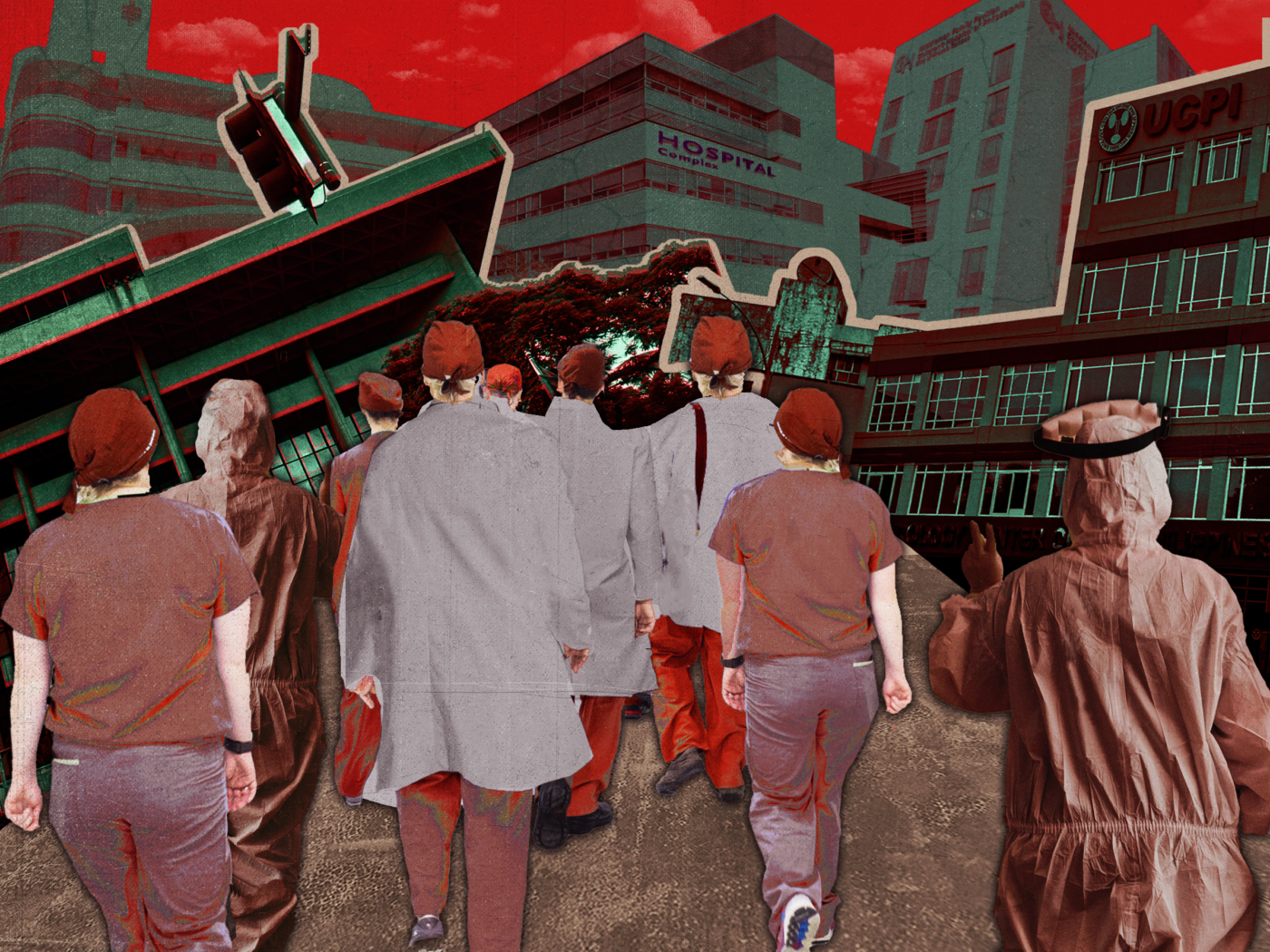THE RECENT enactment of the Regional Specialty Centers Act or Republic Act No. 1195 dictates President Ferdinand Marcos Jr.’s approach to healthcare, as the act aims to build specialty centers (SCs) in select public hospitals to reinforce specialized care in the Philippines.
The dissection of Filipino healthcare needs through the establishment of SCs, as opposed to bolstering the nation’s capacity for primary care, has been colloquially termed as “bopis” healthcare. Currently, there are three main SCs: the Philippine Heart Center (PHC), the Lung Center of the Philippines (LCP), and the National Kidney and Transplant Institute (NKTI).
However, with the prevalence of issues such as overcrowding, bed shortages, and imminent budget cuts in public general hospitals, the feasibility and efficacy of employing this bopis approach is put into question.
Namesakes and legacies
Hospital access in the Philippines is scarce. Historically, the health sector has constantly been underfunded relative to the country’s needs.
Under late dictator Ferdinand Marcos Sr., the PHC, LCP, and NKTI were built to paint a more tangible image of the “New Society.” During its time of establishment, the PHC proved to be helpful in advancing research in the Philippines. Yearly, it can attend to a vast number of cases, taking in more than 14,000 patients.
However, access to healthcare remained extremely limited as all of the SCs were located in Quezon City. Moreover, the Philippines’ incidence of malnutrition, whooping cough, and tuberculosis was still record-high in the Western Pacific Region.
More than fifty years later, the country’s health situation and Marcos Jr.’s healthcare policy is reminiscent of his father’s time. Since his presidency, Marcos Jr. has repeatedly promised to build additional healthcare centers (HCs) and hospitals while highlighting the importance of specialty hospitals. Most recently, he signed Executive Order No. 19, establishing the PHC Annex in Clark Freeport Zone. He cited that this would eliminate the need for Filipinos to travel far to be seen by a doctor.
Specialty care in SCs is vital in treating advanced cases of various diseases, and regional centers ensure that every Filipino is able to access some form of medical attention. However, with Filipinos experiencing and dying from preventable non-communicable diseases, the country would benefit more from primary care offered in general hospitals (GHs).
Distance and control
The inaccessibility of GHs offering primary care becomes more apparent the more rural the area is. According to health reform advocate Anthony Leachon, MD, almost 50% of the best medical centers are situated in the National Capital Region.
The Department of Health’s (DOH) records also show a gap in healthcare accessibility. On average, municipalities in Metro Manila are about 668 meters away from the nearest hospital. Meanwhile, in regions like Mapun and Cagayan de Tawi-Tawi, the nearest hospital is about 205 kilometers away.
“[The inaccessibility] was our problem during the pandemic. It was exacerbated further because there weren’t [enough] doctors,” Leachon pointed out.
During the pandemic, overwhelmed hospitals in the rural area turned down COVID-19 patients, forcing them to rush to hospitals in Manila. However, Manila GHs too were swamped and unable to handle the influx of patients during the pandemic.
To alleviate the problem, DOH had to designate hospitals, seven of which were SCs, as COVID-19 referral hospitals. This directive strained operations in SCs to an extremity, resulting in some facilities being unable to accommodate patients whose concerns are directly under their jurisdiction.
The inadequacy of facilities remains a reality for GHs at present, even after the pandemic. Last October, Philippine General Hospital Director Gerardo Legaspi confirmed that the hospital’s emergency room (ER) has reached its full bed capacity and has admitted almost 202 patients into the ER with a designated capacity for only 70 patients.
Prevention and cure
As it stands, public health is left to worsen before it gets treated. Since there is a barrier to accessing quality healthcare, Filipinos tend to brush off “simple diseases” or symptoms until the pain becomes unbearable. After being left to fester, the disease could have already escalated to a point where it is no longer manageable or curable.
To counter this, Leachon said that the country would benefit from “more prevention rather than [a] curative” attitude, which would be made possible through an increase in general hospitals (GHs), particularly in underdeveloped rural areas.
Apart from this, Leachon also highlights the importance of a meeting of the minds in healthcare policy where different experts and stakeholders are consulted. Educating Filipinos on diseases is also vital in ensuring that the public is aware of how to take care of themselves, thus empowering them and approaching the issue from the bottom-up.
While there is still a long way to go, what remains clear is the importance of overhauling the system and forwarding reforms that prioritize the vulnerable. At the end of the day, the goal should be a good state of health for every Filipino and healthcare that is no longer a luxury or specialty but a staple available to all.




